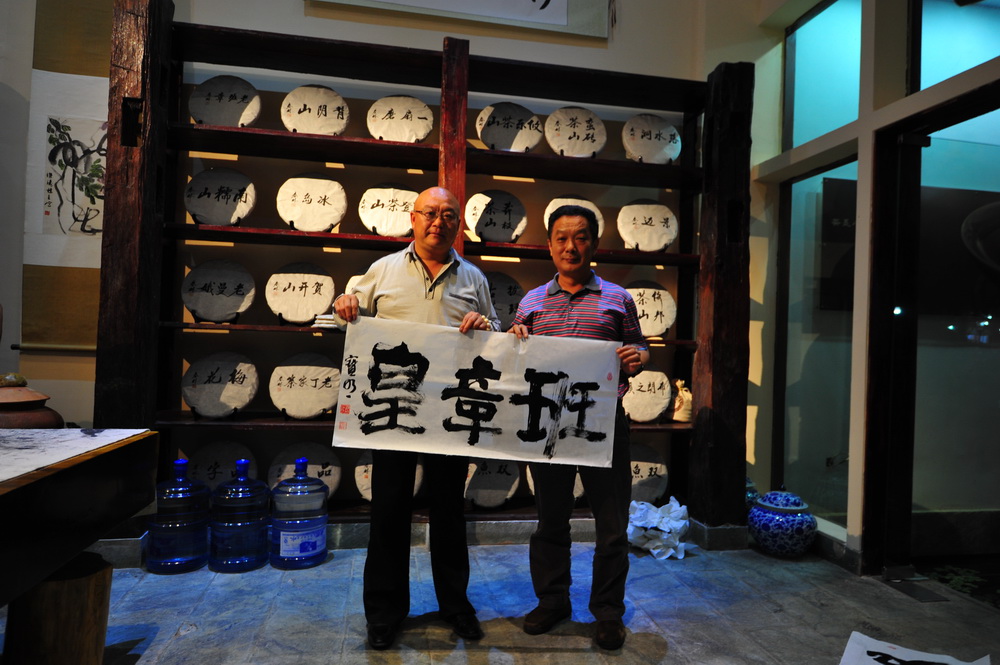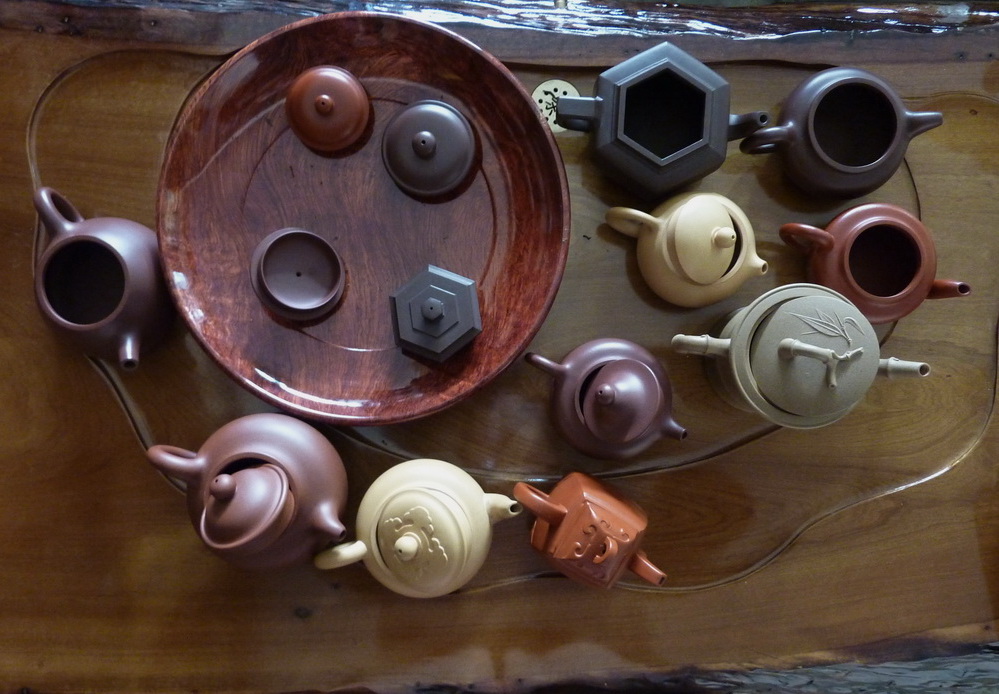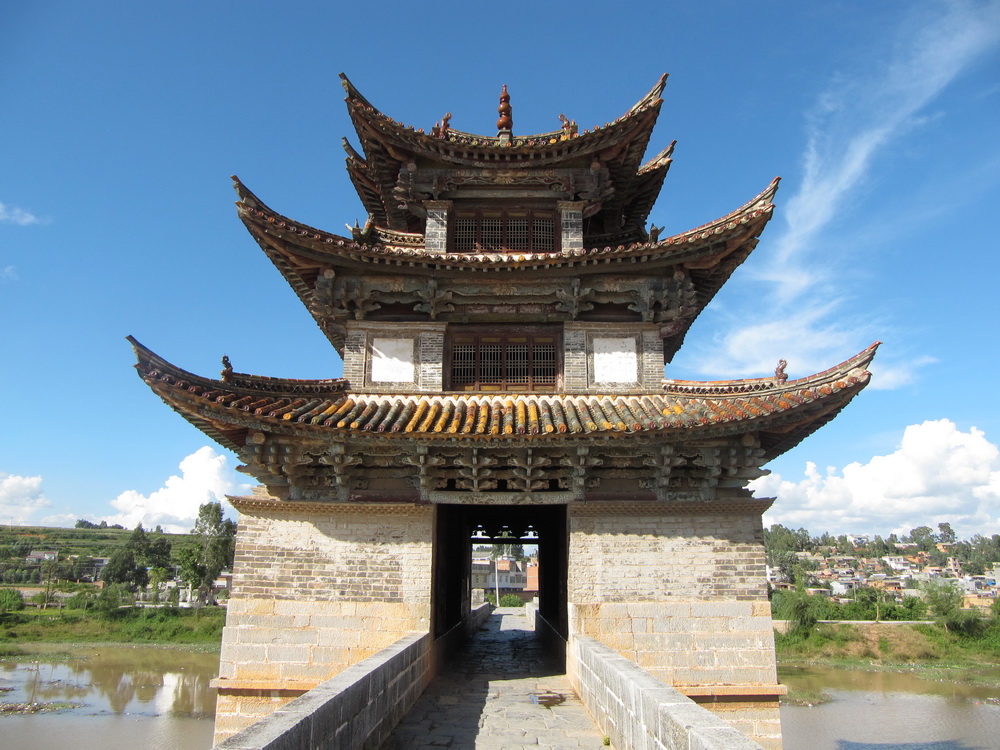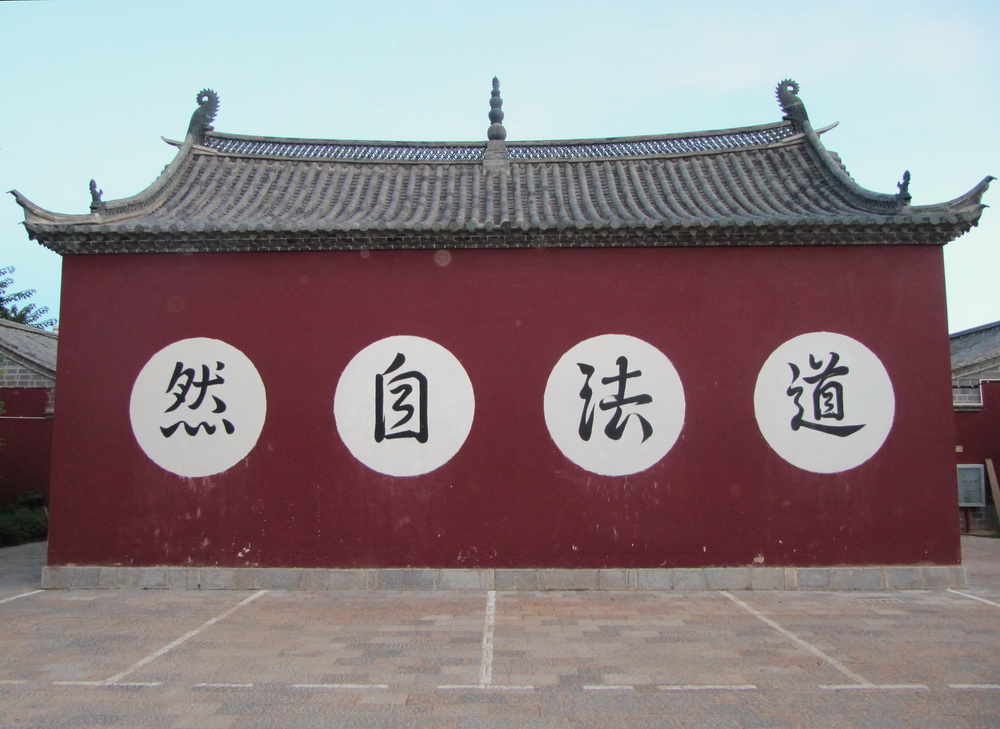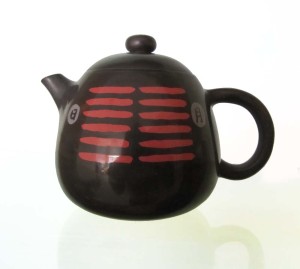I was recently talking with Wu Ya of Yunnan Scientific and Technical Publishing who, besides producing books on Puer tea, also publish the quarterly ‘Yunnan Puer Tea’ Magazine.
Wu Ya’s view echoed Tan’s: that it was not referred to in name in the past and that the wei diao period depended largely on how far a farmers trees were from the house. “What is important” he says “is that the fresh leaves are spread out and that they are not left overnight.” Adding that it was important for farmers to have a place (a small gazebo type shade structure) in their tea fields where leaves can be spread out in order that they stay cool whilst picking continues.
This view, not surprisingly perhaps, was reiterated in the Spring edition of Yunnan Puer Tea, which carried an article ‘Traditional and Modern Puer Tea Making Methods’.
The introduction differentiates traditional and modern methods as pre and post electrification. Essentially, tea making methods before and after 1956 (Three Big Transformations/san da gai zao). [This belies the earlier creation of a tea factory in 1938-39 in Nan Nuo Shan which introduced modern electric machines, but as they were essentially making black and green tea, we can perhaps ignore it in the context of the article. It is also of note that, because of the Nan Nuo Shan factory, set up by Bai Meng Yu, tea farmers in Nan Nuo Shan maintain they were ‘au fait’ with the concept of wilting much earlier than other areas, even though, at that stage, they were not making their own tea as they were obliged to sell their fresh leaves to the tea factory.]
Since wodui (wet pile) Puer tea production techniques were developed rather later in the 1970’s, the article does not consider shou cha in this comparison.
The article poses a central question: “What are the effects on the quality of traditional and modern Puer tea production methods?”
In translation it might read something like this:
“Comparison of the effects on quality of traditional and modern Puer tea production methods“
1. Wilting
Traditional method: Traditional production methods stipulate no particular requirement vis-a-vis wilting. If it happened, it was because the place where the tea was picked was far from where the tea was made, rather than being done deliberately. Thus, in traditional tea production, the craft of wilting was not stressed. Furthermore, there was no record or research of the function of wilting.
Modern method: Modern tea production methods, also have no specific requirements regards the wilting process, but some tea businesses, taking the practice from Wulong tea production, made ‘weidiao’ a set procedure in the production of Puer tea. The result is that Puer tea’s ‘kuse’ is reduced a little and the fragrance augmented. Another reason is that the fermentation process is accelerated and the rate of change in the tea is increased. Enzymes are a form of protein stored in living plants, they are one of the most powerful sources of transformation in organic matter.
People in the past referred to them as ‘yeast’ and believed that their function was to cause fermentation, today, modern science has confirmed that the function of enzymes is not fermentation, rather to act as a catalyst in living matter. In Puer tea, enzymes promote the release of fragrances and bring about other changes; enzymes in tea leaves have a direct relationship to the moisture content, temperature, humidity, etc.
After fresh leaves are picked, the process of dehydration is catalysed by enzymes. In the wilting process, between 10 and 16 hours, the activity of enzymes continuously increases up until 16 hours after which it starts to decline. *
The cataysing function of enzymes directly affects the formation of Wulong and Black tea. In Puer tea production, wilting can facilitate change and is beneficial to the teas quality.
Conclusion: Even though wilting is not considered a necessary process in both traditional and modern production, it is beneficial to the changes that take place and the quality of Puer tea, and is absolutely neccessary.”
*The article here is not suggesting that wilting in the Puer making process should be done for such a long time – it is merely describing the activity of enzymes in relation to time.
Yunnan Puer Tea Magazine, Spring 2011.

It would be easy to dismiss this as commercial patter serving the interests of big tea business so I thought it might be interesting to do a little ‘sondage’ of some publications to see if this point of view was generally supported.
A quick browse round publications in a local bookstore highlighted the broad acceptance of wilting shai qing mao cha for Puer tea. Pick up any Puer tea magazine and there’s always at least a couple of pictures of tea put to ‘wilt’. Of course, we could dismiss this as serving commercial interests, so here are a few more references;
Looking through some rather more official publications:
People’s Republic of China, International Standards GB/T22111-2008, Product of geographical indication (sic)- Puer tea.
“6.5.1 shai qing cha”
“xian ye tan fang – sha qing – rou nian – jie jue – ri guang gan cao – bao zhuang
Spread out fresh leaves – kill green – roll – finish – sun dry – wrap“
Here they use the phrase tan fang – to spread out. There is no further detail
So here:
Yunnan Tea Basic Production Skills (Yunnan cha ye chuzhi jishu)
This book describes 6 steps to produce ‘dian qing‘ a term sometimes preferred for shai qing mao cha – the raw material from which all Puer tea is made.
“Basic process of making sun dried tea (Shai qing cha ye chu jia gong)”
“2 – tan qing
After fresh leaves have been collected, they should be spread out to a suitable depth. 10-15 centimetres, allow the fresh grassy smell to disipate and the fragrance to augment. No moisture should be visible on the surface of the leaves. When the leaves have lost about 10% of their weight they are ready to fry.”
Here they use the phrase tan qing but the meaning is the same as tan fang and the objective – to reduce the moisture content in the leaves – is the same.
One could also dismiss these government publications on the basis that they also have interests to look out for, so I picked up a book I haven’t looked at in a while:
Liu Qin Jin is a fan of cooked Puer tea and no great fan of young Puer – he states in his book ‘Appreciation and Brewing of Puer Tea’ that Sheng cha should not even be called Puer tea until it has acquired the properties that are associated with aged Puer tea – i.e appropriate cake and broth colour and flavours/aromatic qualities that are typically associated with a well aged tea. He puts that at a solid 15 years.
He describes what he outlines as the ‘Steps in making Traditional Puer Tea’, where there is no mention of withering, but on the next page, where there is more detail of the steps involved, the first is ‘Spread out the fresh leaves’ (xian ye tan fang).
He recommends spreading the tea to a depth of 15-20 centimetres until the moisture content has been reduced to around 70%. This suggests a slightly longer wilting time than others propose.
So, by way of drawing some kind of provisional conclusion, we might note that wilting has become an accepted practice, albeit without very clear stipulations, particularly regard to time. There appear to be no indications that wilting Puer tea for Sheng Puer is in any way detremental to the tea, or to the ageing process of that tea. It is most certainly widely practiced to varying degrees and has been done so for several decades.



